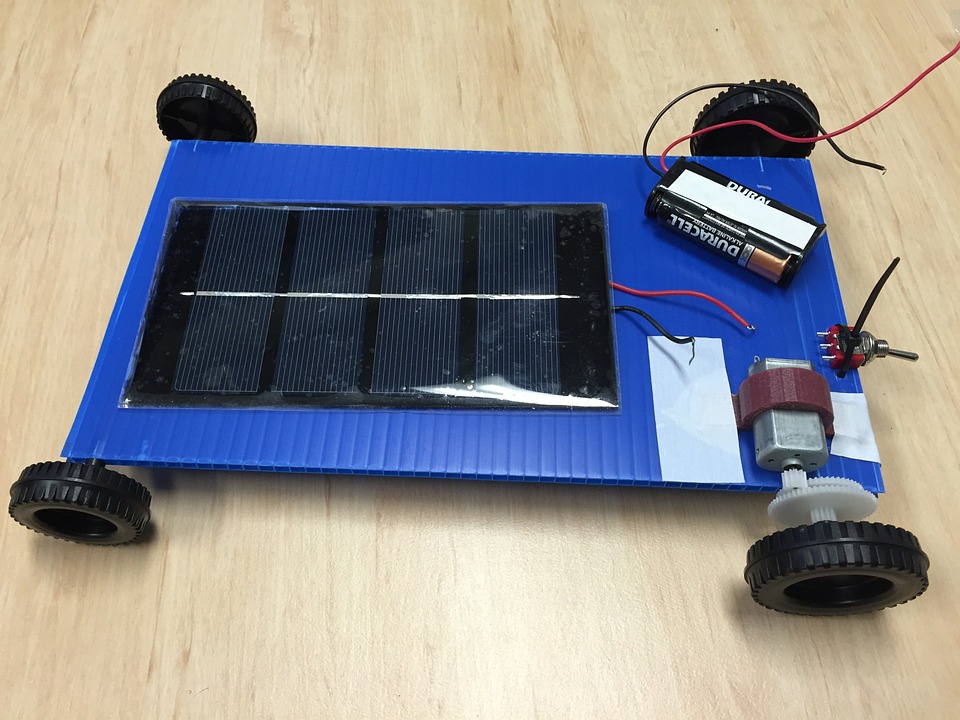Ad Code
Translate
Smart strategies for trading on crypto exchanges
October 20, 2025
Five Do’s For a Healthy Turnover That Bolsters Talent-Retention
October 20, 2025
Discover Honeybee Pharmacy (2025 Guide Important Consumer Tips)
October 14, 2025
What is Ozempic (semaglutide)? (Updated in 2025)
January 30, 2025
How To Find Suitable Properties In Cyprus?
October 20, 2025
Posture Bra: Improving Back Support and Comfort
October 20, 2025
10 Effective Strategies to Improve Domain Authority of Your Website
October 20, 2025
Do Solar Car Battery Chargers Work?
Joseph Nicholls
June 05, 2023
Have you ever felt discomfort when you get into the car to have the engine started and there appears to be no power? Especially when anywhere you're out and late in the night?
In such situations, you realize the importance of keeping the best solar car battery charger. The solar chargers work with clear sunlight compared to standard battery chargers connected to power outlets. But they wonder if the Solar car battery charger is good enough?
Now let’s discuss this in detail:
Do Solar Car Battery Chargers Actually Work?
A solar battery charger converts light input into a DC. They get solar power even though they can also be used in light-free or cloudy applications. Portable solar chargers are required to charge the battery, ensuring that small amounts of electricity are constantly supplied to sustain the load. At the same time, specific versions may be used to completely recharge a car battery.
Although solar battery chargers do work, they have some significant limitations. These are less efficient than regular car battery chargers, and you do not try to charge your battery with a typical charger as fast as you can.
Solar chargers typically produce very little power compared to regular chargers with several amperage settings. They are more practical for holding power than restarting a dead battery. You may use a solar car charge battery, but if the battery is entirely dead, you will be left to cool your heels.
Solar car loaders are fitted with face solar panels. Simply position it next to a window or over your car's dashboard to capture daytime sunlight. Some battery chargers in solar cars attach directly to the battery, while others provide electricity via the cigarette lighter/power socket to the battery.
However, solar chargers do have several advantages. One of their most vital qualities is that they are low-powered and perform as well as service charges.
In the case of sudden battery failure, a solar battery charger can even be a lifesaver. It can help to prolong a stationary vehicle's battery life. And they are often environmentally conscious, of course, and you can reduce the carbon footprint.
Overall, it may be worth investing in.
How do Solar Battery Chargers Work?
Solar chargers operate by converting the energy in a battery from the sun into electricity. The same general technique is used to produce on-site electricity utilizing a solar photovoltaic battery for residential and commercial settings.
Nonetheless, solar panels in solar chargers are different from solar panels in domestic or commercial systems. While the technology is the same, solar panels usually are only capable of generating maximum power of 1500 mA at solar car chargers.
Although you can legally attach many chargers, this is dangerous if you need to learn the technology.
Can Solar Battery Chargers Charge Car Batteries?
A solar battery charger's quantity of ampere is based on many variables, including construction quality and the availability of sunlight. They range between 500 and 1.500 mA on average. Therefore, solar chargers are more potent than trickle chargers.
One drawback is that most solar chargers do not have a voltage controller to adjust or remove power flow. That means you can not, as you do with a float control trickle device, "get it up and forget it."
At first, more amperage is provided and then ramped down until the battery is fully powered, which is the safer way to utilize the solar charger.
This is done automatically with high-quality chargers; other chargers have manual checks that enable you to select a "course" rate and a "fine" rate for finishing. Sunlight is essential, as with any solar charger.
You've got it covered if you can handle anything in a north latitude of 500 mA on a cloudy day. You may be flexible in a hurry, but temperamental flexibility ensures you shouldn't count on it.
How Long Do They Take to Charge?
The regular solar panels take 4-12 hours to obtain a complete charge. The average period for moderate to high wattage panels is about 6 to 8 hours, direct or primarily dry.
In the winter season, the loading period would be closer to 12 or even 14 hours, owing to the unclean environment or other low light situations.
Conclusion!
Having said that, we come to the end of this guide. We hope you have the answer to the question you came here for.
Featured Post
DL Mining Launches Ethereum Contract Participation Service, Helping Users Earn $2K Stable Daily Returns
Zizo Gala-Mkhize-
October 20, 2025
Soapie Teasers
Sister Sites
Most Popular
List of 6,000+ Dofollow Commentluv Blogs FREE (Updated 2025)
January 16, 2025
Five Do’s For a Healthy Turnover That Bolsters Talent-Retention
October 20, 2025
Smart strategies for trading on crypto exchanges
October 20, 2025
Popular posts
List of 6,000+ Dofollow Commentluv Blogs FREE (Updated 2025)
January 16, 2025
How To Choose The Right Place For A Winter Campsite
March 06, 2023
Five Do’s For a Healthy Turnover That Bolsters Talent-Retention
October 20, 2025
Footer Menu Widget
Created By Blogspot Theme | Distributed By Gooyaabi Templates


Social Plugin